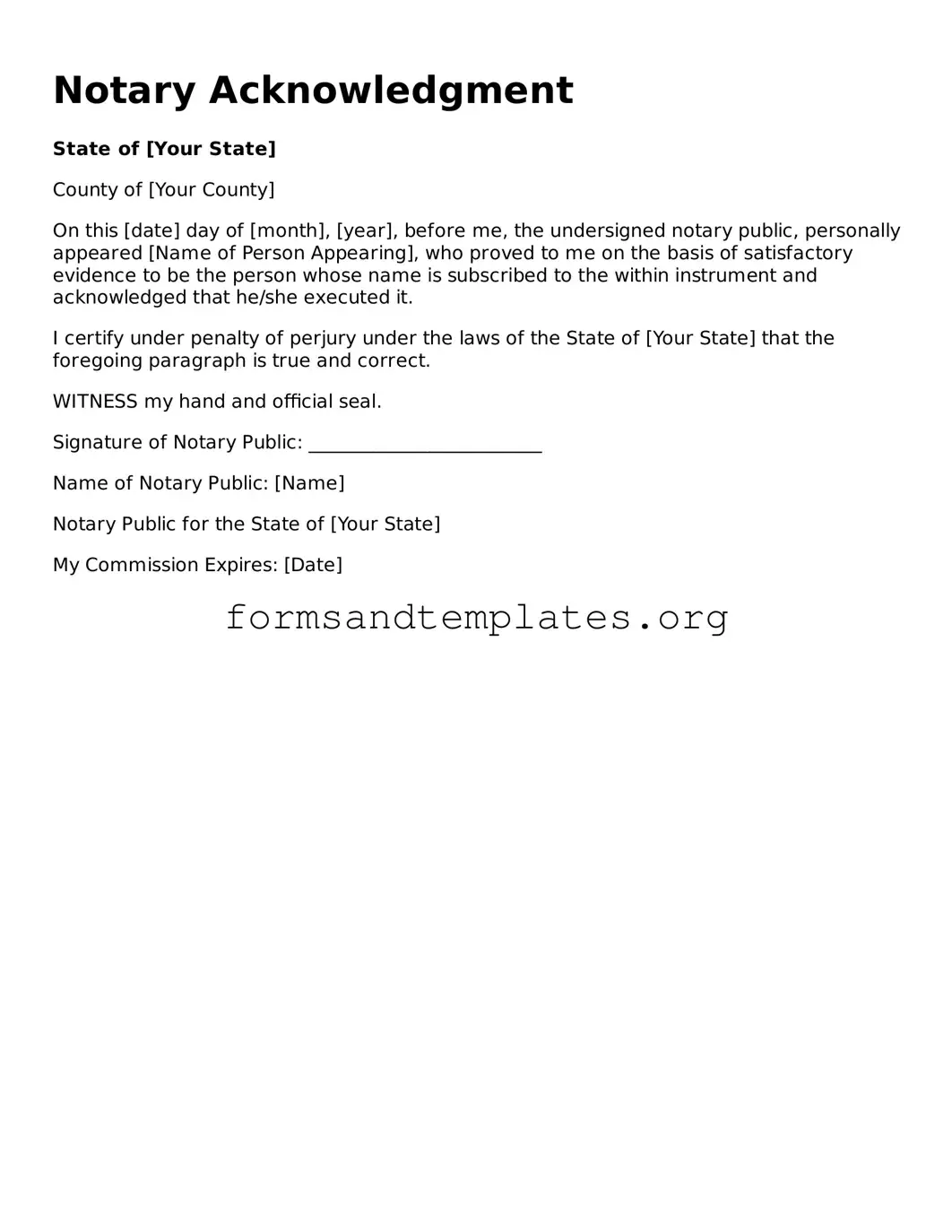A Notary Acknowledgement form is a document that verifies the identity of a signer and confirms that they signed a document willingly and without coercion. This form is often used in legal transactions to provide assurance that the signature is authentic. It serves as a safeguard against fraud and helps to ensure the integrity of the document being notarized.
A Notary Acknowledgement form is typically required in various situations, including:
-
Real estate transactions, such as deeds and mortgages.
-
Legal documents, including powers of attorney and wills.
-
Business agreements that require notarization for validity.
While not every document needs to be notarized, having an acknowledgment can add an extra layer of credibility to important agreements.
To complete a Notary Acknowledgement form, follow these steps:
-
Fill in the details of the document being notarized.
-
Provide the names and signatures of the individuals involved.
-
Include the date of the acknowledgment.
-
Sign the form in the presence of a notary public.
The notary will then complete the form by adding their signature, seal, and other required information.
Who can serve as a notary public?
Notaries public are individuals authorized by the state to perform notarizations. They must meet specific qualifications, which generally include:
-
Being at least 18 years old.
-
Being a resident of the state where they are commissioned.
-
Completing any required training or education.
Notaries are typically found in various settings, including law offices, banks, and government offices.
What is the difference between a Notary Acknowledgement and a Notary Jurat?
A Notary Acknowledgement confirms that a person has signed a document, while a Notary Jurat verifies that the signer has sworn or affirmed that the contents of the document are true. In essence, an acknowledgment is about the signature, whereas a jurat involves a declaration of truthfulness regarding the document's content.
Yes, many states allow for remote notarization, where the notary and signer are in different locations. This process typically requires the use of audio-visual technology to ensure that the signer can be identified and that the signing occurs in real-time. However, the specific rules for remote notarization can vary by state, so it is essential to check local regulations.
If a Notary Acknowledgement form is not completed correctly, it may lead to complications, such as the document being deemed invalid. Common issues include missing signatures, incorrect dates, or incomplete notary information. It is crucial to ensure that all sections are filled out accurately to avoid potential legal challenges or delays in processing the document.
